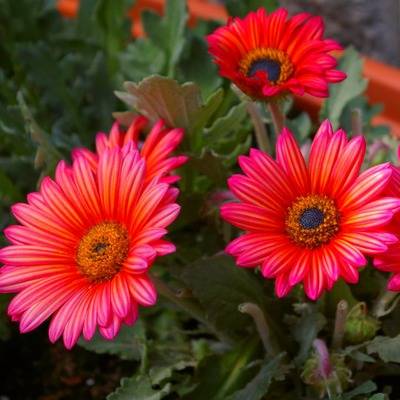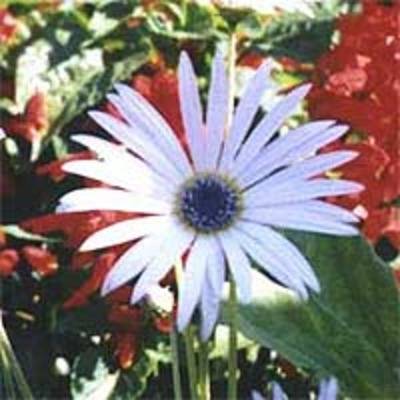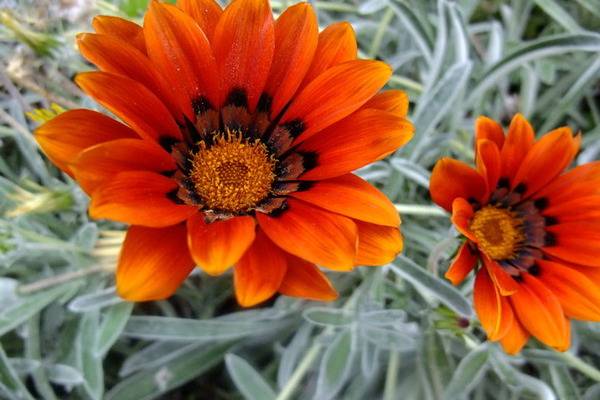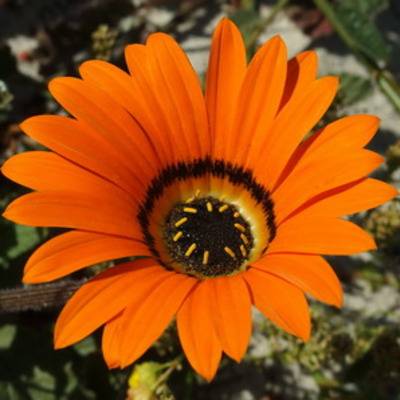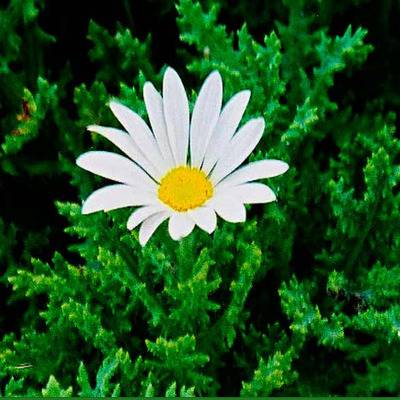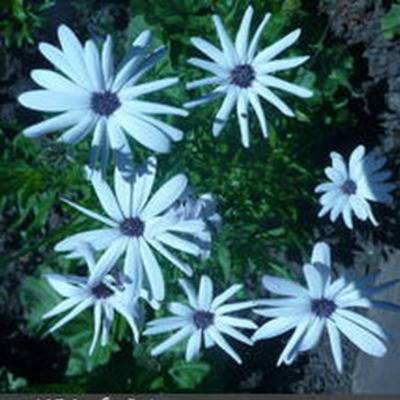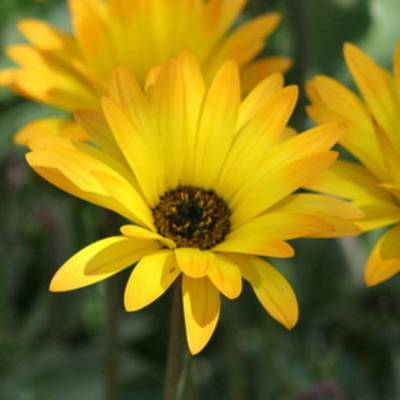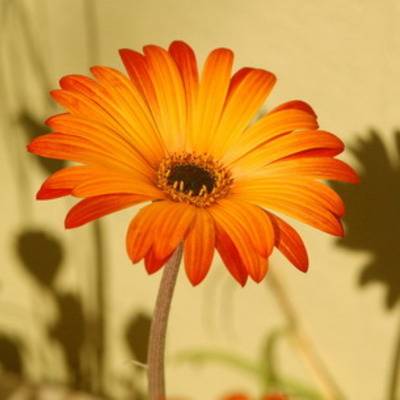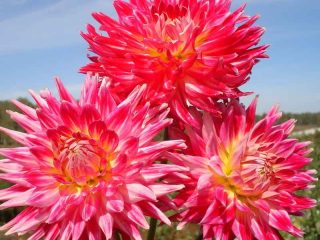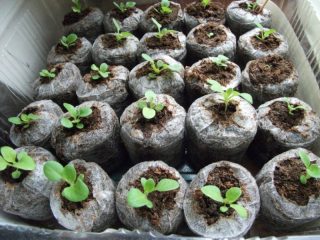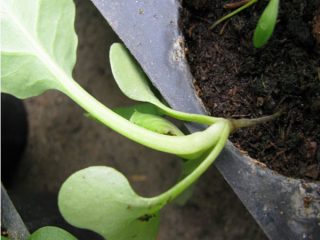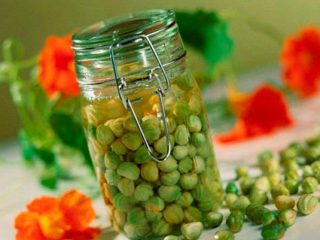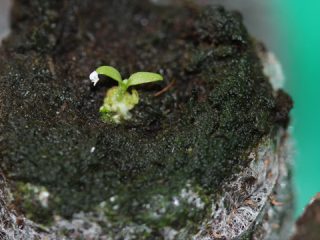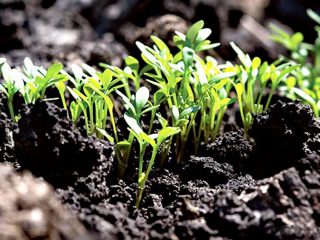Content
Many summer residents are fond of landscape design and create original and unique flower arrangements from various cultures on their plots. Arctotis deserves special attention due to the varied colors of the inflorescences and undemanding nature.
Plant characteristics
The Arctotis flower belongs to the Asteraceae family. The name of the plant literally translates as “bear's ear.” There are about 30 types of flowers, which are annual, biennial and perennial.
The Arctotis flower has erect, branching stems ranging from 20 to 70 cm in height. The leaves of the herbaceous or subshrub Arctotis are slightly pubescent and have a silvery-greenish tint. The main difference between the species is manifested in the parameters, shapes and shades of colors. Inflorescences of rich colors up to 7-10 cm in diameter. In the flower, the marginal petals are painted in bright tones of white, pink, orange or deep purple. The tubular petals stand out in dark shades of purple, brown or crimson.
Cultivated flowers Arctotis are predominantly perennials, but the bushes do not overwinter in the central or northern regions, so they are grown as annuals. The luxurious flowering of Arctotis is distinguished by a long period - from July almost until autumn frosts.It is noteworthy that the inflorescences fully open only in bright weather. The most common are hybrid varieties obtained by crossing different species.
The most popular and frequently planted are several varieties of Arctotis:
- The hybrid variety is distinguished by flowers painted in red-orange shades (Harlequin Mixed) or dark pink inflorescences (Wine). The stems grow to a height of 30-45 cm. Hybrid Arctotis with semi-double petals look very elegant;
- The stechastolifoli variety can be considered the most common. Flower baskets with a diameter of about 8 cm grow on stems approximately 70 cm high. This Arctotis stands out for its bicolor inflorescences with snow-white petals on the edges and shiny centers of a deep blue hue (photo). It is noteworthy that the garden variety has longer leaves and wider inflorescences than the main species;
- Arctotis stem grows no higher than 15 cm. Inflorescences of bright, rich orange shades are formed by reed petals;
- The stemless variety of the plant has long (15-20 cm) basal leaves with a green front surface and a white-gray underside. Elegant inflorescences of small diameter (about 5 cm) are distinguished by a black and red central part;
- Rough Arctotis grows no higher than half a meter. It is distinguished by yellow reed petals with thin brownish strokes.
It is impossible not to mention the rare varieties: Arctotis the Beautiful is of short stature (up to 30 cm) with bluish petals at the edges of the basket.
Eared grows up to 45 cm and has deep yellow marginal petals.
The Arctotis Magnificent flower is notable for its large orange petals along the edges of the flower basket.
Planting seeds
You can grow a flower by sowing seeds in open ground or planting seedlings. Arctotis seeds are usually quite small in size, with a brownish surface and a slightly pubescent appearance. Seed material is sown in open ground in the first half of May.
Sowing stages
Growing Arctotis seedlings is the best option, and it is better to sow the seeds in late March-early April.
- Since the taproot system of plants is quite long, the seeds are sown in separate specially prepared containers so as not to damage the roots when planting Arktotis sprouts. You can use a nutritious soil mixture available in flower shops. Or you can prepare the soil yourself - mix sand, garden soil and peat in equal proportions. To disinfect the soil, it is recommended to pre-calcine it in the oven.
- Make holes in the containers in the center of the moistened nutrient mixture and place 2-3 Arctotis seeds (in each glass).
- The holes are carefully sprinkled with earth and additionally moistened (you can use a sprayer).
- To prevent the soil from drying out, cover all containers with glass or plastic film. Suitable conditions for the emergence of seedlings are a warm and well-lit place.
When the first shoots appear after a week or a week and a half, you can remove the covering material. It is recommended to water the seedlings through a tray. Arctotis flowers need regular but moderate watering.
In warm southern regions, you can sow seeds directly into open, moist soil in early May.When preparing holes, you need to take into account the size of future flowers and apply the appropriate layout of the holes. Place 5-6 seeds in each hole. The seed germinates in 10-12 days and after a week you can carefully thin out the sprouts, removing weak seedlings. The bush is formed from 2-3 sprouts. Since Arctotis flowers tolerate short-term cold snaps well, you don’t have to worry about the plants during late spring frosts.
Features of care
In order for the plant to bloom profusely and for a long time, well-lit places, protected from the winds, are allocated at the summer cottage for planting Arctotis flowers. The plant prefers lightly drained soils and does not grow well in constantly damp soils. The flower also reacts negatively to the addition of fresh organic fertilizers to the soil.
Moreover, low-growing Arctotis flowers are placed according to a pattern of 25x25 cm, and tall ones - 40x40 cm. Since the plant develops a long and powerful central rod, the seedlings can be replanted only once.
Since in natural hot conditions the flower grows on rocky soils, it does not need abundant watering. The main requirement when choosing a place to plant Arctotis flowers is open areas.
It is recommended to use mineral compounds (phosphorus) in small quantities during the flowering period of Arctotis. It is better to add nutrient solutions while watering the bushes.
After watering, it is recommended to loosen the soil and remove weed. To stimulate lush flowering, it is recommended to constantly remove faded baskets.Please note that tall varieties may require additional support.
Since Arctotis flowers are not left to overwinter in the middle/northern regions, the bushes are torn out and burned in the fall. It’s easy to stock up on planting material yourself. To do this, you need to observe the faded inflorescences. After about one and a half to two weeks, the wilted baskets are covered with a fluffy layer. They need to be cut and dried in a cool, dry place. The seeds are cleaned from the baskets and packed in thick paper bags.
Pest Control
Arctotis flowers are resistant to diseases and pests. Sometimes plantings can suffer from aphids or root rot.
Aphids are small insects that feed on plant sap. Many types of pests can carry diseases. The first visible signs of damage to the Arctotis flower are that the leaves begin to turn yellow and curl, and small greenish or black bugs appear on the shoots. Most often, the insect attacks fresh or weakened plants. If the pest is not controlled, the growth of the bushes slows down, and the leaves and flowers begin to deform. Aphids can be caused by ants or a long period of humid, hot weather. If single plants are affected, you can get rid of insects by washing the green mass of the bushes with a stream of water. If a large area is affected, the plants are sprayed with insecticides (Fiore, Actellik).
When damp weather sets in in the summer with sudden temperature changes, gray rot can damage the plants. The fungus affects all above-ground parts of the plant. The disease first appears on the lower leaves and then spreads to the stem.The disease manifests itself in the form of light brown dry spots. There is no point in fighting the spread of a fungal disease. Therefore, at the first signs of disease, the damaged plant is carefully dug up and burned. For prevention, you can spray the remaining bushes with Fundazol.
Flowers in landscape design
Arctotis look harmonious both in separate groups and in flower arrangements in flower beds. Gardeners recommend planting the plant on rocky crusts. High varieties exquisitely decorate plantings with low flowers (marigolds, verbena, petunia). Low species look great along borders or in clearings next to summerhouses.
Arctotis requires very little attention. Thanks to constant flowering, the dacha will delight owners and guests with elegant and bright flowers all summer long.
